Collection overview
The British Library holds five black wax cylinders, C46/1397–1401, recorded by the anthropologist Bronislaw Malinowski during his fieldwork in what is today Papua New Guinea between 1914 and 1918. These cylinders form the Bronislaw Malinowski 1915 -1918 Trobriand Islands, Territory of Papua Cylinder Collection (C46). These cylinders were transferred from the British Museum’s Museum of Mankind to the British Library’s National Sound Archive in 1985, but dubbings were made of them before this time, as explained below. The cylinders have no accompanying documentation. The only information that we have comes from the cylinder boxes and an accompanying luggage tag, and from Malinowski’s publications and archives. The five recordings are all male vocal solos, although a group may be audible in the background of C46/1397.
Research by Vicky Barnecutt, British Library, and Don Niles, IPNGS.



Bronislaw Malinowski (1884-1942) was born in Poland and moved to London in 1910 to study economics and exchange at the London School of Economics under Charles Seligman1Charles Seligmann changed the spelling of his name to Seligman in 1914 (Myers 1941:627). We use the later spelling here as the focus is on the period from 1914. and Edvard Westermarck.2Baldwin, Bernard. 1945. “Usituma! Song of Heaven.” Oceania, 15:201–238. https://onlinelibrary.wiley.com/doi/abs/10.1002/j.1834-4461.1945.tb00425.x He also corresponded with Alfred Cort Haddon and W H R Rivers at Cambridge. Malinowski visited the Territory of Papua, the southern half of what is now Papua New Guinea, three times between 1914 and 1918, spending extended periods of time on the Trobriand Islands on his second two trips.
Malinowski published his most famous work, Argonauts of the Western Pacific, in 1922. In it, he described the kula ring, a ceremonial exchange system of shell valuables that operated across the Trobriand Islands and the Massim Archipelago. Sir James Frazer wrote the preface and Malinowski dedicated the book to Seligman. Malinowski taught anthropology in the UK, most famously at the LSE, and subsequently in the US. He is regarded by many as one of the founding fathers of British social anthropology, and is often noted as the originator of the “participant observation” method of ethnographic fieldwork which became a hallmark feature of the discipline.
Fieldwork and Recordists, 1914 – 1918
In September 1914, Malinowski made his first trip to Papua.3“Papua” is used here in its historical sense to refer to the southeastern part of the mainland and the islands to the east. It has nothing to do what provinces in present-day Indonesia. He spent about six months there. When he first arrived in Port Moresby, he worked closely with Ahuia Ova, a Koita man and chief who had also worked with Haddon in 1898 and Seligman in 1904 (Young 1984:8, Malinowski 1967:10). Malinowski left Port Moresby and travelled along the south coast of Papua, eventually spending three months on the island of Mailu (Young 1984:10). He made two further trips to Papua, and visited the Trobriand Islands both times. He spent two periods of around 9 months each based on Kiriwina, from July 1915 to March 1916, and from December 1917 to October 1918 (Young 1984:20, 23; 2004:399).
Malinowski’s mentor, Charles Seligman, had made sound recordings during his 1898 and 1904 fieldtrips to British New Guinea (as Papua was called before 1905), and during the latter trip made the first known recordings in the Trobriand Islands. Seligman gave Malinowski “a camera, a phonograph, anthropometric instruments and other paraphernalia of ethnographic work” for his first expedition to Papua in 1914 (Malinowski 1922:xix), and Malinowski purchased 72 wax cylinders (Young 2004:267).4A phonograph as used here, is a device for the recording and playback of wax cylinders. In a letter to Seligman on 11 July 1914 from the RMS Orontes bound for Australia, Malinowski wrote, “The phonograph is with me and I gather the Cylinders will go with general freight from the A & N stores.”5Michael Young by email to Vicky Barnecutt, 9 September 2020
During his stay in Mailu, Malinowski wrote to Seligman in November 1914, “My weakest points are photographs and phonographic records … whenever skill comes into play I am not much good” (Young 1988:10). However, whilst he certainly produced hundreds of photographs during his three periods of fieldwork in Papua, we only know of five cylinders that he recorded, and they seem to all come from his stays in the Trobriand Islands (1915–16, 1917–18). We do not know what happened to the other 67 cylinders that he had bought. Did they make it up to Papua with the rest of his freight and equipment? If so, did he make more recordings? If not, where did they end up?
Malinowski noted playing the phonograph in November and December 1914, during his fieldwork in Mailu, including when Alfred Haddon and his daughter, Kathleen, were visiting (Malinowski 1967:36, 52). Malinowski noted that he “forbade hymn-singing,” but there is no indication that this was in relation to recording (Malinowski 1967:36). We do not know whether Malinowski recorded in other places he visited in Papua, such as Sinagoro, Motu and Koita in today’s Central Province, or Woodlark Island, Kwato and Samarai in Milne Bay.
Malinowski next mentioned the phonograph during his final trip to Papua, between November 1917 and October 1918. He played the phonograph for his own pleasure in Samarai en route to the Trobriand Islands in November 1917 (Malinowski 1967:116), presumably using pre-recorded commercial releases he brought with him. When on Kiriwina on 3 June 1918, he noted that the phonograph needed overhauling, and later the same day he noted that he “could get nothing out of it” (Malinowski 1967:287). It is not clear whether this was because of technical problems with the phonograph, or because his intended performer, Viteku, refused to sing for him (Malinowski 1967:288).

During his fieldwork trips to the Trobriands from July 1915 to March 1916, and from December 1917 to October 1918, Malinowski spent most of his time on the island of Kiriwina. He noted that he “stayed in Omarakana in 1915-1916” for eight months (1922:471), his tent “pitched side by side” with the lisiga (chief’s personal hut) of To’uluwa (1922:468). Omarakana is a village in the north-east of Kiriwina, and was the home of To’uluwa, the “most important chief” of the Trobriand Islands (1922). To’uluwa owned the Gumagabu dance that Malinowski recorded and described (1922:291). Malinowski also stayed in Omarakana during his final period of fieldwork in 1917-1918.
Part of Malinowski’s research involved studying the kula ring exchange system. The island of Dobu, 50 km south of Kiriwina and part of the D’Entrecasteaux Islands, was “one of the most important links in the chain of Kula and a very influential centre of cultural influence” (1922:38). It was a major competitor to Kiriwina within the kula ring, and Malinowski noted that the Dobu language was the lingua franca for much, if not all, of the region involved in kula activities (Malinowski 1922:39–40).6The use of Dobu as a lingua franca was encouraged by the Methodist missionaries who had been active in the region since 1891 (Lawton 1977:907).
Malinowski mentioned “three short visits” to Dobu during his time in the region, as well as “a month’s study of the Amphletts” (Malinowski 1922:32). Young noted that Malinowski spent two weeks on Gumawana, a village in the Amphlett Islands (Young 2004:534). These brief visits to Dobu were on the way to or from other places, and it is not clear whether he actually spent any significant time on the island of Dobu, or whether he referred to the Dobu district, which included a large area around the island of Dobu (Malinowski 1922:30).
A Dobu man named Ogisa, sometimes spelled Ogisi, worked with Malinowski during his last period of fieldwork in the Trobriand Islands. Malinowski visited Dobu briefly on 30 November 1917 when sailing from Samarai to the Trobriands, and noted briefly in his Diary “Abduction of Ogisa” (Malinowski 1967:140). It is not clear whether this comment was a joke and we do not know Ogisa’s thoughts about the situation. Ogisa seems to have stayed on Kiriwina with Malinowski for the next seven months; he is last mentioned on 24 June 1918 (1967:292). Malinowski probably consulted with Ogisa and other Dobu men that he met in Kiriwina (Young 2004:540), Samarai (Malinowski 1922:16), and perhaps Port Moresby.
The cylinders have a small amount of information on their lids, usually the title of the song and the name of the performer. The words noted on the cylinder containers are all written in blue crayon. Malinowski’s biographer, Michael Young, confirmed that Malinowski wrote these himself; the handwriting tallies with his other written notes (Young, pers. comm. 23 Apr 2020).
We looked through Malinowski’s publications for any and all variations of the words written on the cylinder boxes, and found mention of all of them: Dobu, Gumagabu, Ilakavetega, Monakewo, Paluwa, Ragayewo, Tokulabakiki, Usi Tuma. It is evident that Malinowski himself revised the spelling of some of the words. He wrote Monakeu on the cylinder box, but referred to Monakewo in his published works, and Gumajabu on the cylinder box, which he spelt Gumagabu in publications. We also looked for references to Billy Hancock, the trader who Malinowski spent a lot of time with during his fieldwork, and who helped Malinowski with his photography.
Four of the cylinders contain recordings of songs or stories that Malinowski wrote about in more detail or included information on related elements, such as dances. Gumagabu and Ragayewo were both songs and dances; there are photographs of the dances in Malinowski’s collection, and he transcribed and translated both the song and story of Gumagabu. He also transcribed and translated the story of Ilakavetega. He did not publish anything about the Usi Tuma song, but he did write about the significance of Tuma in Trobriand belief systems. We do not have any additional information about the contents of the recording Dobu (C80/1387).
Gumagabu is a song, dance and story/myth from Kiriwina; Malinowski explained and transcribed both the song and the story (Malinowski 1922:291–296). Both the song and the story of Gumagabu depict the avenging expedition of a chief called Tomakam, although they do not quite tally. Tomakam’s aim was to avenge the earlier murder of his older brother, a chief called Toraya, in the district of Gabu in the D’Entrecasteaux Islands. These details are included in the Appendix below.
Malinowski mentioned seeing the dance of gumagabu (1916:380). The date of publication indicates that he must have seen it during his first period of fieldwork in the Trobriand Islands, between July 1915 and March 1915.
“At Omarakana there was still another cause for their anger, connected with the ethnographer’s presence in that place, and I had to hear several times reproachful allusions and remarks from the elders and from To’uluwa, the chief, himself. The fact was that I had bought from various villages some twenty dancing shields (kaidebu); I wanted to see what the kaidebu dances were like. Now, in Omarakana there was only one dance in progress, the rogaiewo, a dance performed with bisila (pandanus streamers). I distributed the kaidebu among the jeunesse doréeof Omarakana, and the charm of novelty being too strong (they had not had sufficient kaidebu to dance with properly for the last five years at least), they at once began to dance the gumagabu, a dance performed with the dancing shields. This was a serious breach of the customary rules (though I did not know it at the time), for every new form of dance has to be ceremonially inaugurated. The omission was very much resented by the baloma,hence bad weather, falling coconuts, etc. This was brought up against me several times” (Malinowski 1916:380).
Young described gumagabu as a “Type of dance using dancing shields” (1998:283), and “the most popular” of the kaidebu dances (1998:94). He noted that this photo is almost certainly of the gumagabu dance, probably at Omarakana.
“Usituma is a song and dance of the Trobriand Islands … it is widely, and well known, being owned by six, or seven, different villages” (Baldwin 1945:201). Usi is probably an archaic pronunciation of wosi, the word for ‘song’ in Kilivila, the language of Kiriwina. Malinowski noted that Tuma is “a small island lying some ten miles to the north-west of the Trobriands,” where a person’s spirit went after their death (Malinowski 1916:354). Therefore, usi Tuma may have been a song about this spirit place.
In the archive of Malinowski’s photographs at the LSE, there is a photo that is simply titled “Spirits (tuma)”. It features a European man (not Malinowski) standing on what looks like a raised coral reef at the sea edge.
Ragayewo seems to refer to a story or song and a dance. Malinowski spelt it in a variety of ways, as outlined below.
The reference in Malinowski’s diary infers that it is a story or song. He noted that in the evening of 30 June 1918, on Kiriwina, after talking with “Monakewo about copulation,” he “then sat and wrote down and translated Ragayewo” (1967:295).
Malinowski also wrote about the dance of Rogaiewo. He noted that he “watched the whole proceedings from beginning to end” of the milamala 7Malinowski described milamala as “the annual feast of the spirits” (1916:358); “a very complex social and magico-religious phenomenon” (1916:371), “a time of dancing, feasting, and general rejoicing” that occurred after the garden crops had been harvested (1916:370). Young defined milamala as “Period of harvest festival; dancing season” (1998:284). season in Omarakana, including observing “one big visit, when To’uluwa went with all the men from Omarakana to the village of Liluta, in connection with the purchase of the Rogaiewo dance by the latter community from the former” (1916:375). According to Michael Young, Malinowski’s fieldnotes indicate that this trip took place in late September 1915, and that the dance was also purchased by “Pilibomatu, the sorcerer of Kwebwaga” (Young 1998:90). Young quoted Linus digim’Rina on the dance:
“Linus commented, “According to my father, the Rogaewa dance comes from Iwa islanders, who first taught it to men of Okeboma. They in turn taught it to the Tabalu of Omarakana. But they were not given the complete dance, so Okeboma retained a somewhat different version.” (Young 1998:90)
Malinowski also noted that until he provided some dancing shields known as kaidebu, “in Omarakana there was only one dance in progress, the rogaiewo, a dance performed with bisila (pandanus streamers)” (1916:375, 380). There is a photo of the dance published in The Sexual Life of Savages; in the caption, he referred to the Rogayewo as “a slow dance performed by men wearing fibre skirts, and holding pandanus streamers in their hands” (1929: plate 58).
Malinowski transcribed, translated and explained the story of “The Reef Heron and Ilakavetega,” from Kiriwina. Ilakavetega was an old woman who lived with her granddaughters, and there was a song / poem told as part of the story. Malinowski called it a “gratuitous insult” and noted that it was told with “sing-song intonation” (Malinowski 1929:341–342).
Users are advised that the following section includes potentially offensive content.
Paluwa, Monakewo and Tokulubakiki were three of Malinowski’s consultants on Kiriwina in the Trobriand Islands. He evidently had a good relationship with them. He must have met them during his first period of fieldwork on Kiriwina, and was happy to see them again when he revisited Omarakana in 1918. He mentioned them often, and noted that he “could indulge in a considerable amount of mutual ‘ragging,’” that they always understood allusions and jokes, and often made him laugh (Malinowski 1929:405).
Malinowski described Tokulubakiki as his “best friend” (Malinowski 1929:148) and his “favourite informant in Omarakana,” saying that he could always rely on Tokulubakiki’s “honesty, goodwill and dispassionate reflection” (Malinowski 1929:161). He noted in a letter to his wife that Tokulubakiki was “a decent, honest, straightforward man” (Wayne 1995:151).
Tokulubakiki was from the chiefly clan, and his father was one of the chiefs of Omarakana. Malinowski mentioned working with Tokulubakiki on many occasions, with magic and linguistics being common topics (Malinowski 1967:293, 295, 296, 310). Malinowski took a number of photographs of Tokulubakiki (Malinowski 1922:plate 9; 1929:236; Young 1998:50, 54, 68, 69, 129), and also of Tokulubakiki and Kuwo’igu, his wife (Malinowski 1929:plate 26).
Description of the cylinders
Malinowski wrote down very little information about his recording activity, and there is no solid evidence that he made any recordings during his first period of fieldwork in Papua from September 1914 to March 1915, or during the second, between July 1915 and March 1916. The only mentions of using the phonograph as a recorder come from 3 June 1918, as noted above (1967:287, 288).
These mentions, and the information from the cylinders themselves, suggest that these recordings were made in the Trobriand Islands, during one of the two periods that Malinowski spent on Kiriwina, July 1915 – March 1916, and December 1917 – October 1918.
For four cylinders, there is some indication that these recordings were made during the second of his two periods of fieldwork on the Trobriands. Cylinder C46/1401 has a date written on the cylinder box: 17/7/18 (i.e., 17 July 1918).This was near the end of his time on Kiriwina. Information on the cylinder boxes of C46/1398, 1399, 1400, and 1401 indicates that the performers were Paluwa, Monakewo, and Tokulubakiki, all men who lived in Omarakana. Although Malinowski spent time in Omarakana on his first Trobriands fieldwork trip, he seems to have worked particularly closely with these three men on his second trip, so recording them at that time seems likely. However, lack of information on the period from July 1915 to March 1916 means it is impossible to be sure.
A slightly weaker link is that one of the tracks on C46/1399 is noted as Ragayewo. In his Diary, Malinowski wrote that in the evening of 30 June 1918, on Kiriwina, after talking with “Monakewo about copulation,” he “then sat and wrote down and translated Ragayewo” (Malinowski 1967:295). It is not clear whether this was linked to making the recording of Ragayewo, but it is possible.
For the fifth cylinder, C46/1397, the only piece of contemporary information that we have is the word “Dobu” written on the cylinder box. If indeed the cylinder was recorded on Dobu, Malinowski did not visit this until July 1915; whilst it is possible that he made the recording elsewhere in the region, it seems more likely that he made it either in or en route to the Trobriand Islands during his fieldwork trips there (July 1915 – March 1916, and December 1917 – October 1918). In any event, until further research with relevant communities, it remains unclear what link, if any, there might be between the recording and Dobu.
Finally, considering that Malinowski felt that phonographic recording was one of his weakest points (Young 1988:10), he may have made these five recordings towards the end of his fieldwork so that he had at least used the phonograph and cylinders that were a rather expensive part of his gear. But this is merely conjecture; evidence on everything to do with Malinowski and sound recording is very limited indeed.
| British Library shelfmark | Recording title | Performer name | Recording location | Recording date | Content description | Performer description | Recording notes | Languages | Genre | Recordist | Recording length | Recording trip | Description of cylinder | Collection title | Cylinder location | Images of cylinder containers / documentation | Related print publication: | Related print publication: | Related print publication: | Related print publication: | Related print publication: | Related print publication: |
|---|---|---|---|---|---|---|---|---|---|---|---|---|---|---|---|---|---|---|---|---|---|---|
| C46/1397 | Dobu | Unidentified (male chorus) | Trobriand Islands, Territory of Papua | July 1915 – October 1918 | 1. Unaccompanied male vocal group with leader. Leader's voice predominating and others faint. The language of Dobu was the lingua franca for the Kula region; the island and its surrounding district were important in Kula activities (Malinowski 1922:39-40). Although labelled as Dobu [dob] on the cylinder lid, it is questionable whether the language is Dobu or Kilivila. Certainly the musical style is very similar to those recordings identified as coming from the Trobriands, hence being in Kilivila language. | Reasonable quality recording but warbly speed fluctuations throughout. | Kilivila or Dobuan | Field recordings; Folk songs and music; Narrative songs; Ballads | Malinowski, Bronislaw Kasper | 2'23" | Bronislaw Malinowski's 1915-1918 fieldwork on Kiriwina, Trobriand Islands, Papua New Guinea | Black wax cylinder | Bronislaw Malinowski 1915 – 1918 Trobriand Islands, Territory of Papua Cylinder Collection (C46) | British Library | 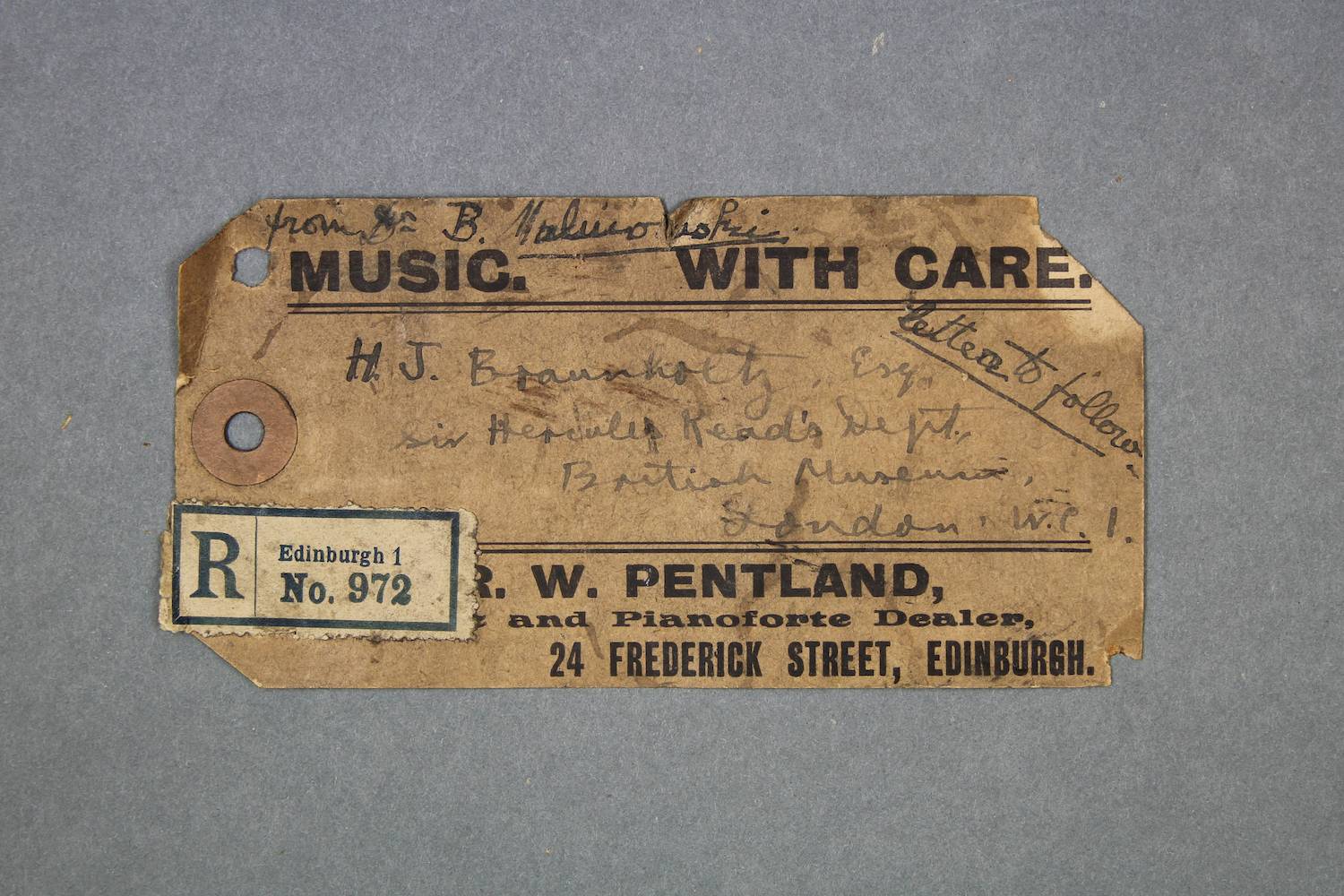 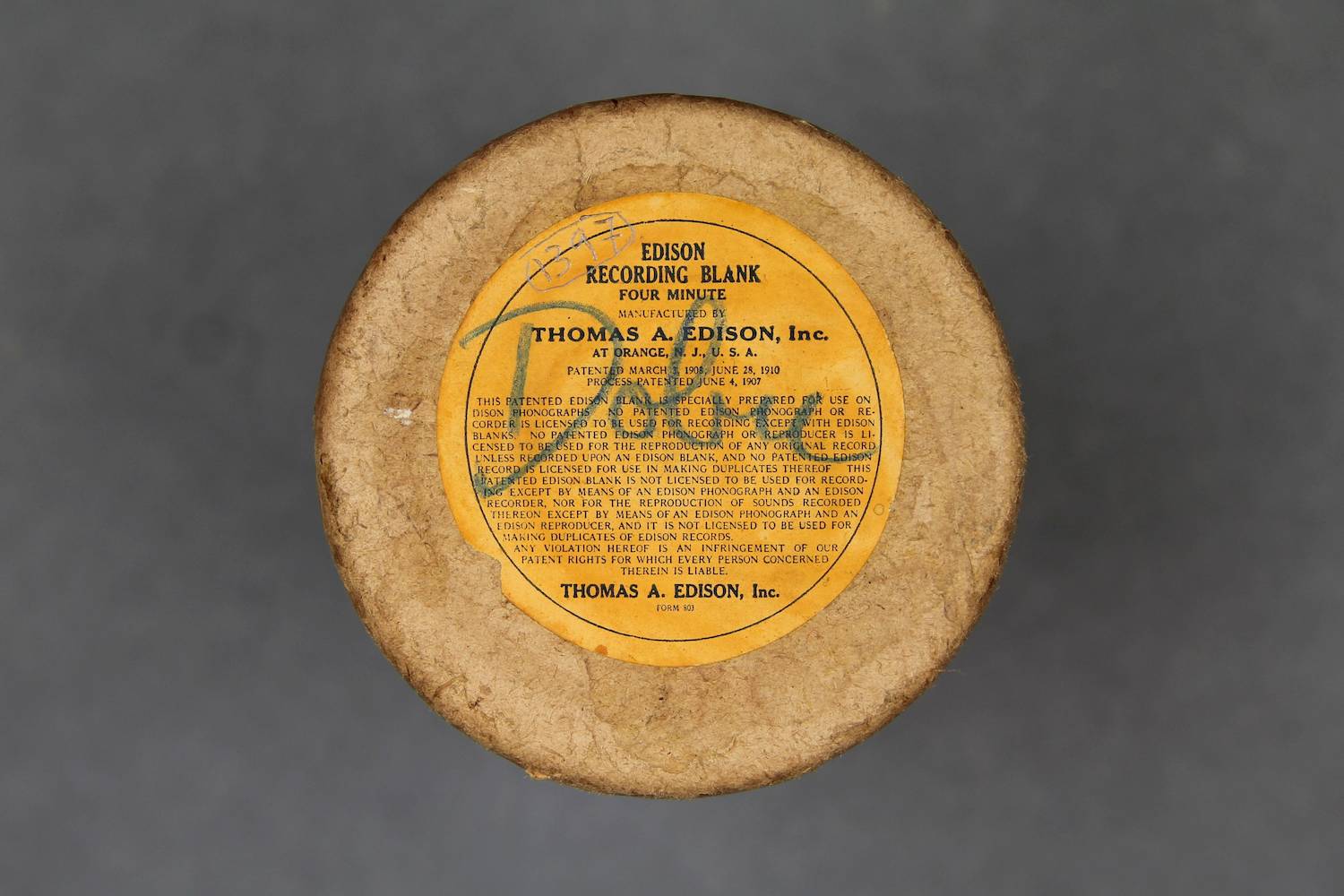 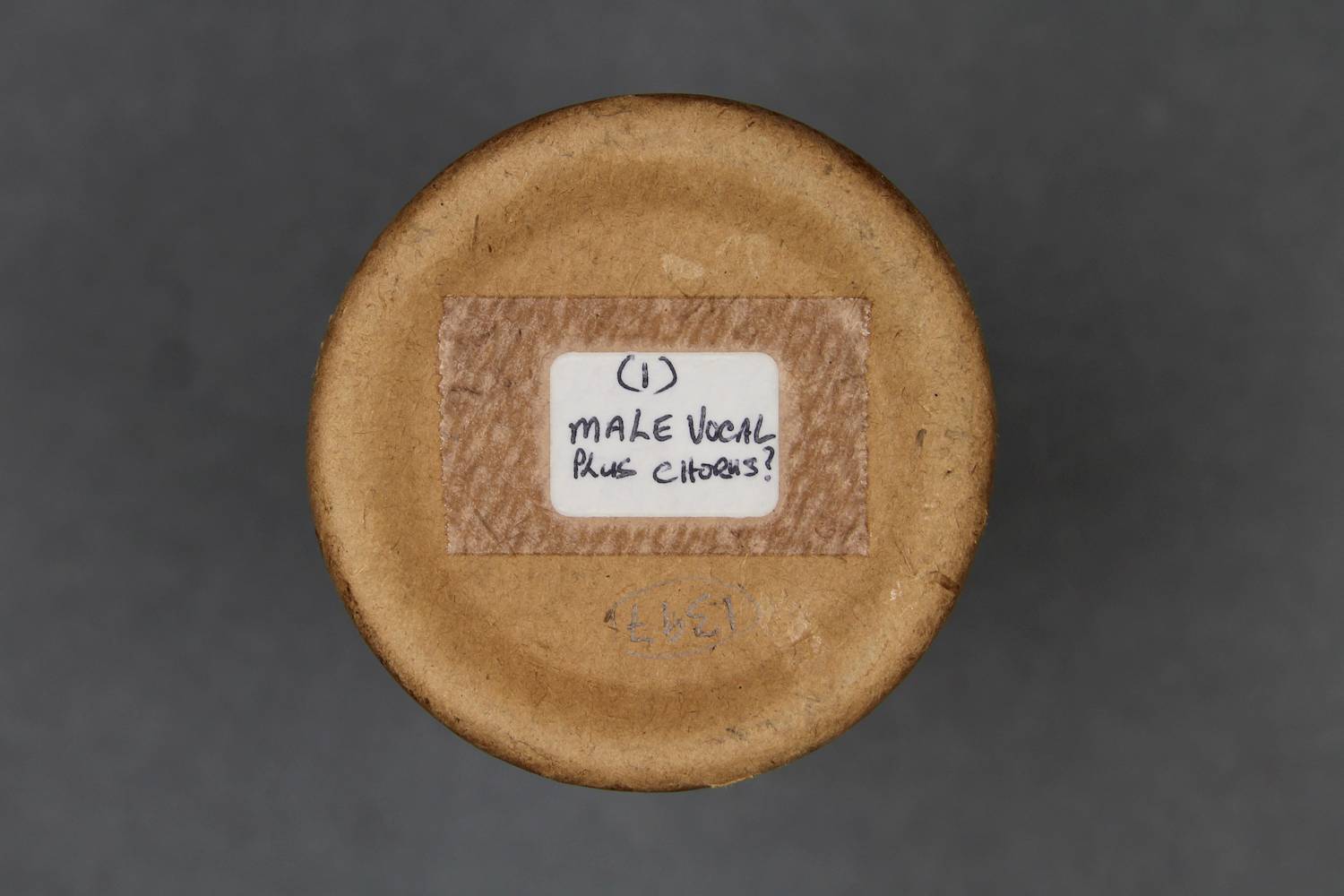    | Malinowski, Bronislaw. 1922. Argonauts of the Western Pacific: An Account of Native Enterprise and Adventure in the Archipelagoes of Melanesian New Guinea. London: Routledge. Read this at: https://wolnelektury.pl/media/book/pdf/argonauts-of-the-western-pacific.pdf | ||||||
| C46/1398 | Gumagabu | Paluwa (singer, male) | Trobriand Islands, Territory of Papua | July 1915 – October 1918 | 1. Unaccompanied male vocal solo singing. No further information available. Gumagabu is a song, dance and story/myth from Kiriwina; Malinowski explained and transcribed both the song and the story (Malinowski 1922:291-296) and photographed the dance (LSE photo archives MALINOWSKI/3/7/13). Both the song and the story of Gumagabu depicts the avenging expedition of a chief called Tomakam, although they do not quite tally. Tomakam’s aim was to avenge the earlier murder of his older brother, a chief called Toraya, in the district of Gabu in the D’Entrecasteaux Islands (Malinowski 1922:291-296). Malinowski mentioned seeing the dance of gumagabu (1916:380). The date of publication indicates that he must have seen it during his first period of fieldwork in the Trobriand Islands, between July 1915 and March 1916. Michael Young described it as a “Type of dance using dancing shields” (1998:283), and “the most popular” of the kaidebu dances (1998:94). The photograph in Malinowski 1929: plate 14, "Men in Full Festive Attire" and a similar one in LSE (LSE photo archives MALINOWSKI/3/7/13) almost certainly show the gumagabu dance being performed. | Paluwa was a Trobriand Islander of low rank from the village of Omarakana (Malinowski 1967:295). He had three sons, including Monakewo (see below), and three daughters, and “discussed his troubles … at length” with Malinowski (Malinowski 1929:80). | Reasonable quality recording, but with slight speed fluctuation throughout. | Kilivila | Field recordings; Folk songs and music; Narrative songs; Ballads | Malinowski, Bronislaw Kasper | 2'10" | Bronislaw Malinowski's 1915-1918 fieldwork on Kiriwina, Trobriand Islands, Papua New Guinea | Black wax cylinder | Bronislaw Malinowski 1915 – 1918 Trobriand Islands, Territory of Papua Cylinder Collection (C46) | British Library |  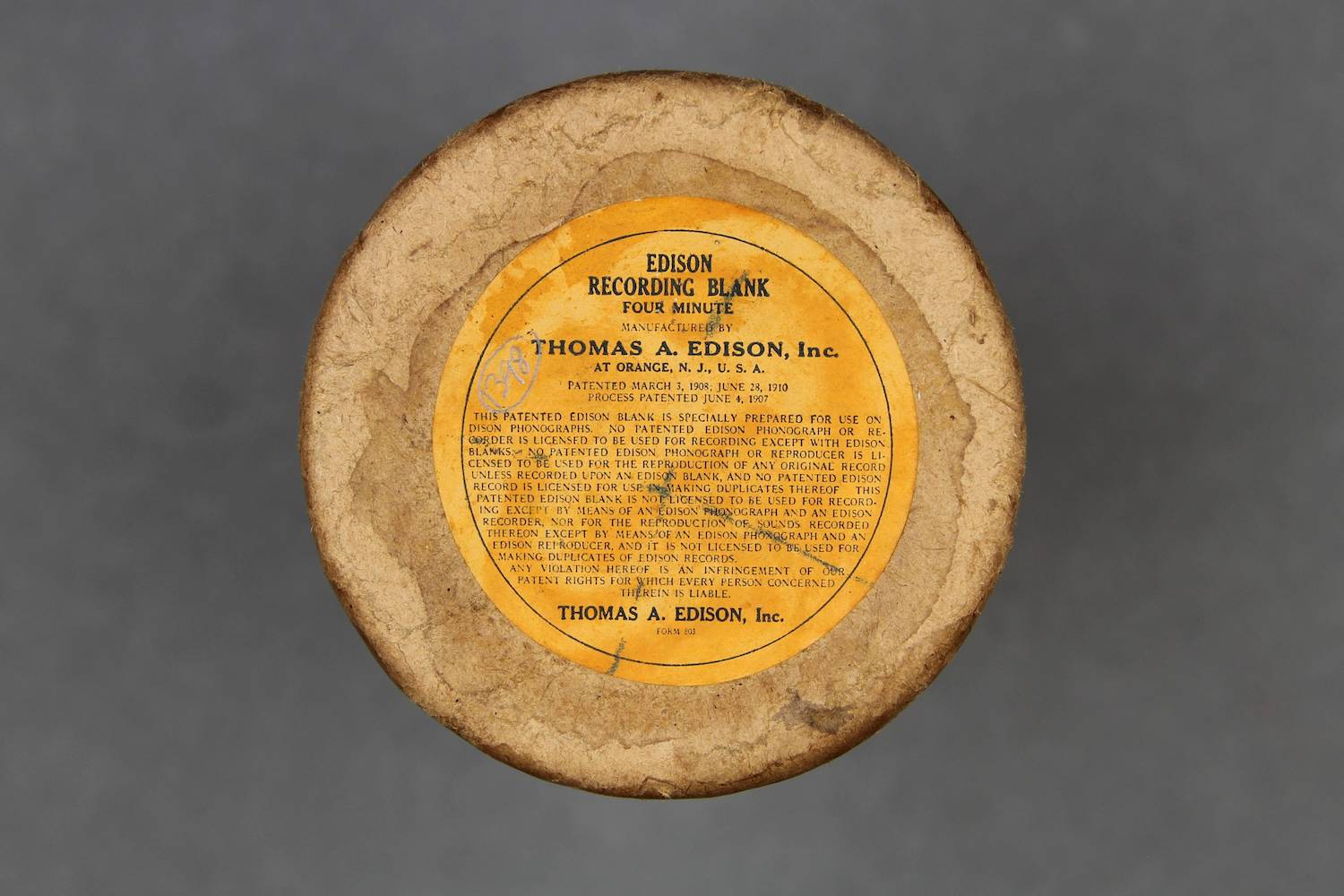  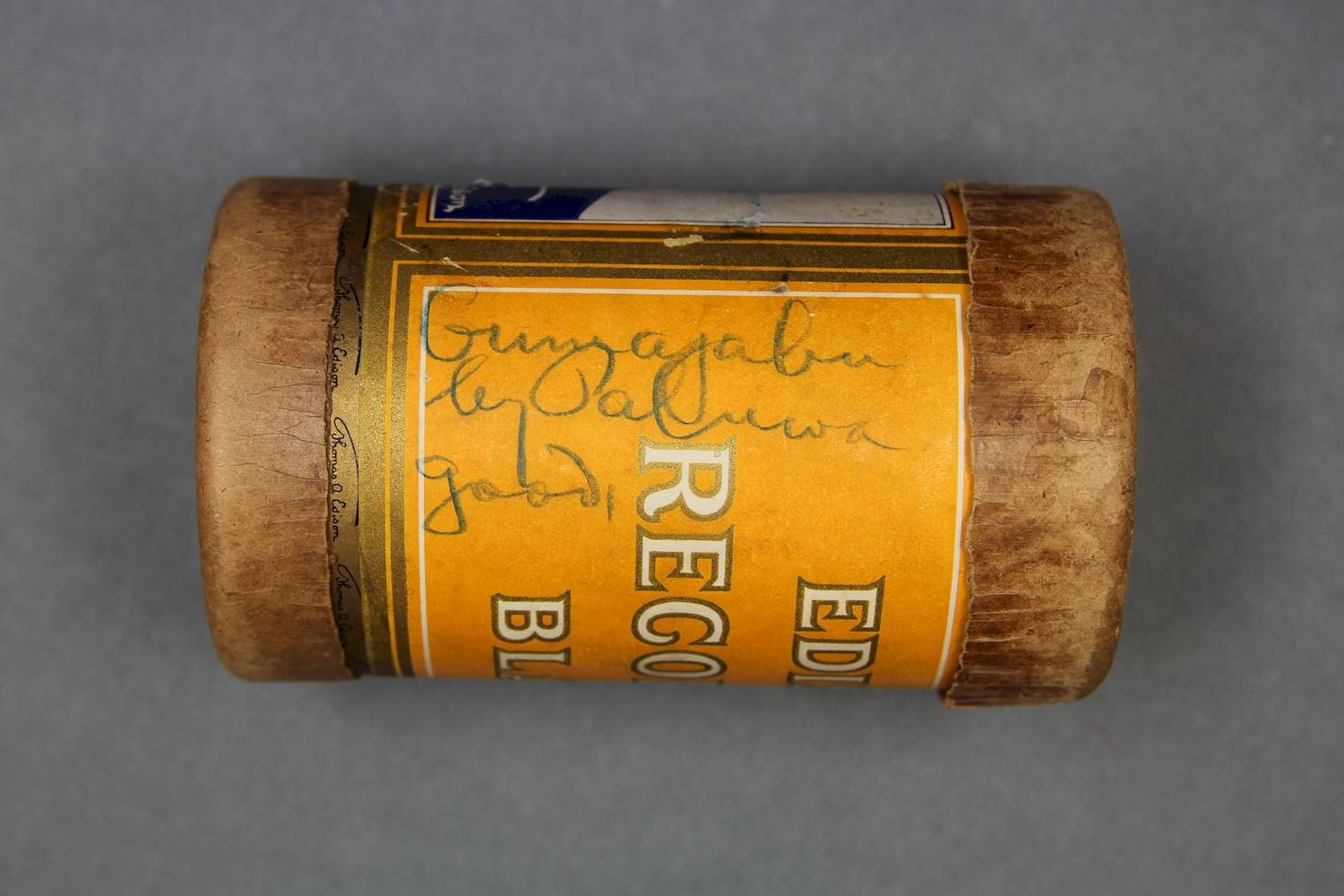   | Malinowski, Bronislaw. 1922. Argonauts of the Western Pacific: An Account of Native Enterprise and Adventure in the Archipelagoes of Melanesian New Guinea. London: Routledge. Read this at: https://wolnelektury.pl/media/book/pdf/argonauts-of-the-western-pacific.pdf | Malinowski, Bronislaw. 1916. ”Baloma: The Spirits of the Dead in the Trobriand Islands.” The Journal of the Royal Anthropological Institute of Great Britain and Ireland 46:353-430. Read this at: https://www.jstor.org/stable/2843398 | Malinowski, Bronislaw. 1929. The Sexual Life of Savages in Northwestern Melanesia. New York: Liveright. Read this at: http://www.berose.fr/IMG/pdf/malinowski_1929-the_sexual_life_of_savages.pdf | |||
| C46/1399 | Usi Tuma / Ragayewo | Monakewo (singer, male); Tokulubakiki (singer, male) | Trobriand Islands, Territory of Papua | July 1915 – October 1918 | 1-2. Unaccompanied male vocal solo singing. “Usituma is a song and dance of the Trobriand Islands … it is widely, and well known, being owned by six, or seven, different villages” (Baldwin 1945:201). Usi is probably an archaic pronunciation of wosi, the word for ‘song’ in Kilivila, the language of Kiriwina. Malinowski noted that Tuma is “a small island lying some ten miles to the north-west of the Trobriands,” where a person’s spirit went after their death (Malinowski 1916:354). Therefore usi tuma may have been a song about this spirit place. Malinowski noted that in the evening of 30th June 1918, on Kiriwina, after talking with “Monakewo about copulation,” he “Then sat and wrote down and translated Ragayewo” (Malinowski 1967:295). There are no other references to Ragayewo in his published material. Usi is probably an archaic pronunciation of wosi, the word for ‘song’ in Kilivila, the language of Kiriwina. | Malinowski described Monakewo as “a great friend of mine” (Malinowski 1929:68) and “one of my best linguistic commentators” (Malinowski 1935:38). Monakewo was Paluwa’s son, and lived in Omarakana. Malinowski mentioned him many times in his texts, and noted working with him on a number of occasions. Monakewo helped Malinowski back from another village one evening when Malinowski was unwell (Malinowski 1967:295). Malinowski described Tokulubakiki as his “best friend” (Malinowski 1929:148) and his “favourite informant in Omarakana,” saying that he could always rely on Tokulubakiki’s “honesty, goodwill and dispassionate reflection” (Malinowski 1929:161). He noted in a letter to his wife that Tokulubakiki was “a decent, honest, straightforward man” (Wayne 1995:151). Tokulubakiki was from the chiefly clan, and his father was one of the chiefs of Omarakana. Malinowski mentioned working with Tokulubakiki on many occasions, with magic and linguistics being common topics (Malinowski 1967:293, 295, 296, 310). Malinowski took a number of photographs of Tokulubakiki (Malinowski 1922:plate 9; 1929:236; Young 1998:50, 54, 68, 69, 129), and also of Tokulubakiki and Kuwo’igu, his wife (Malinowski 1929:plate 26), and also with his mother and children (LSE photo archives MALINOWSKI/3/ARG/15 LSE). | Surface noise caused by mould. | Kilivila | Field recordings; Folk songs and music; Narrative songs; Ballads | Malinowski, Bronislaw Kasper | 2'08" | Bronislaw Malinowski's 1915-1918 fieldwork on Kiriwina, Trobriand Islands, Papua New Guinea | Black wax cylinder | Bronislaw Malinowski 1915 – 1918 Trobriand Islands, Territory of Papua Cylinder Collection (C46) | British Library |  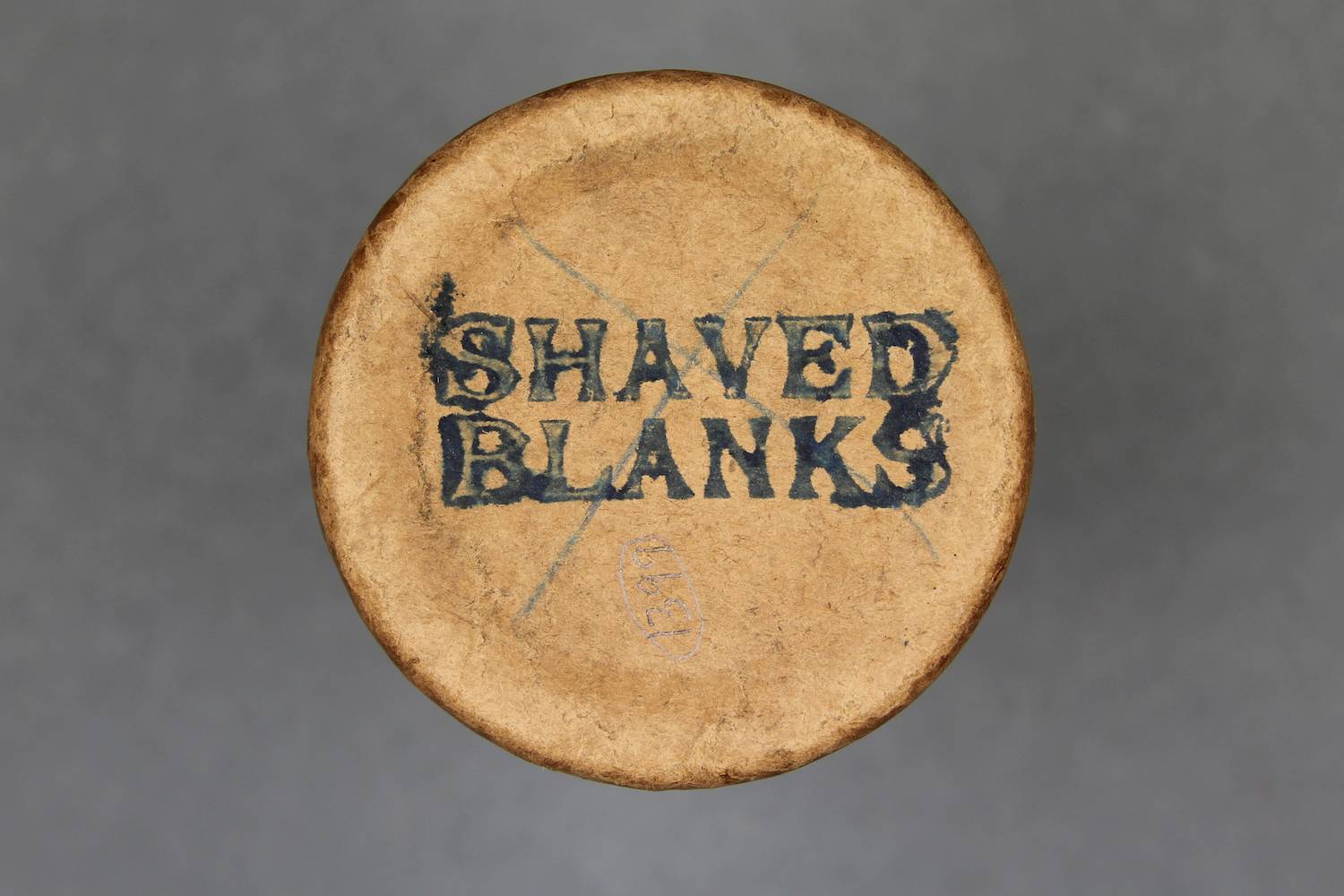 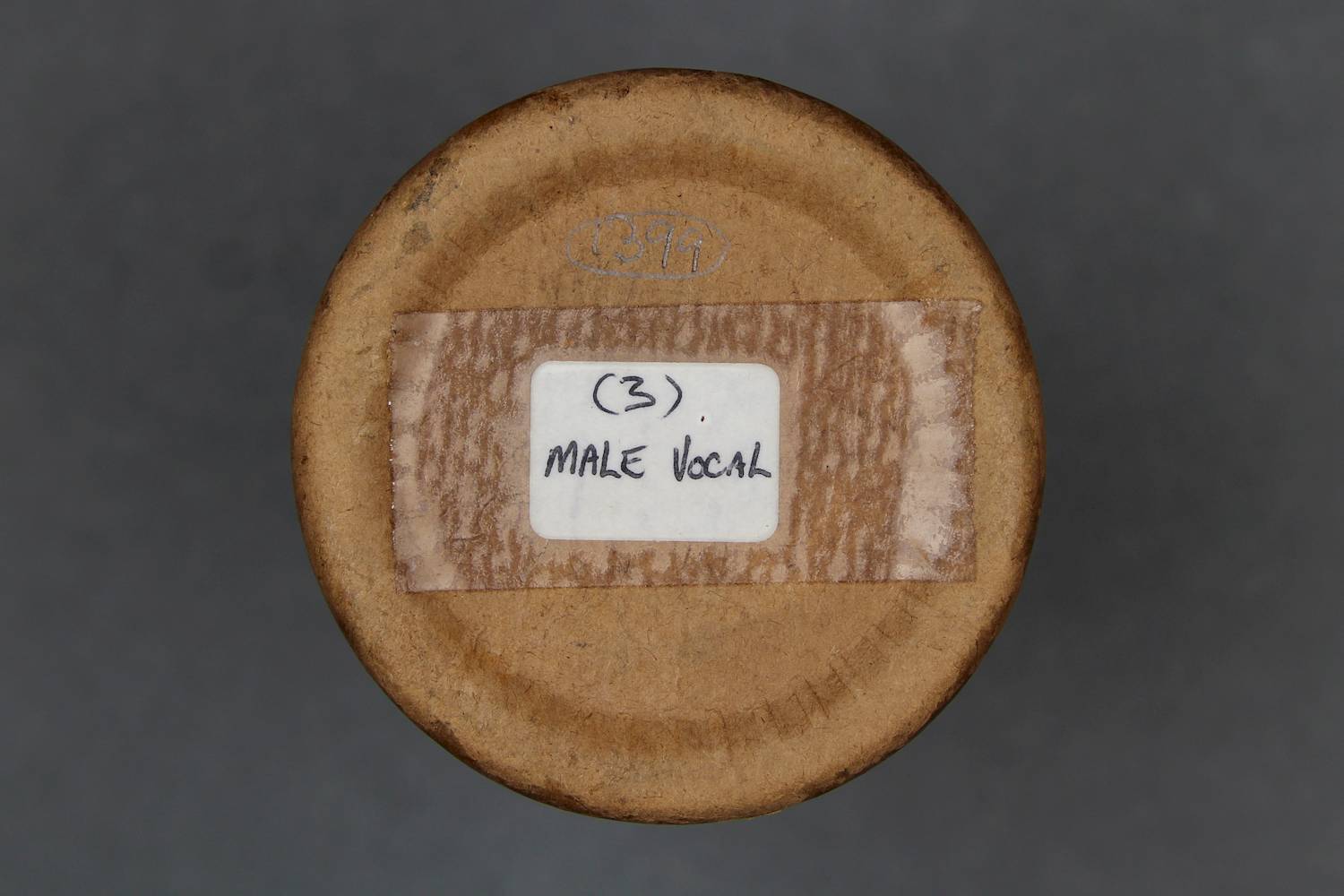 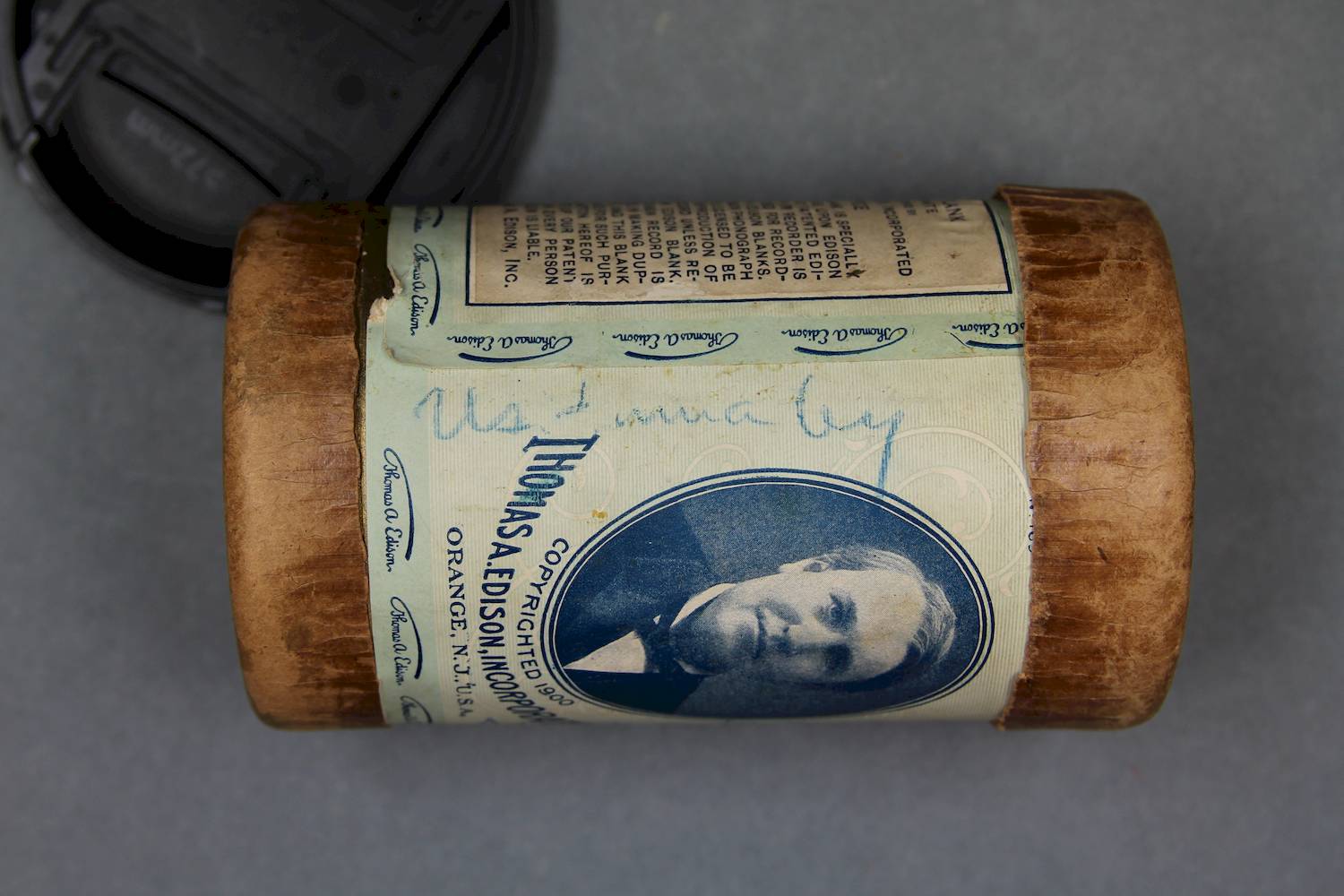 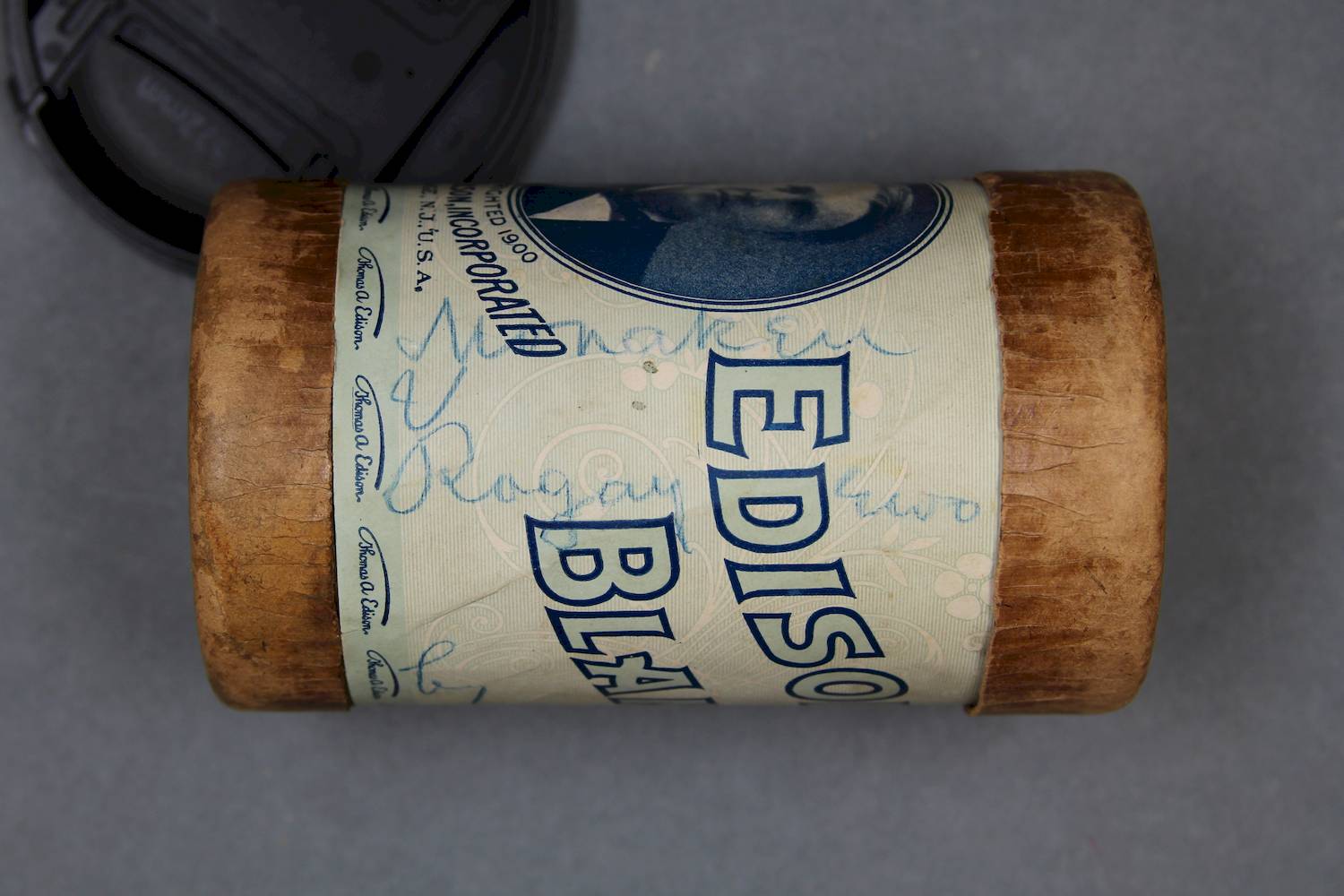 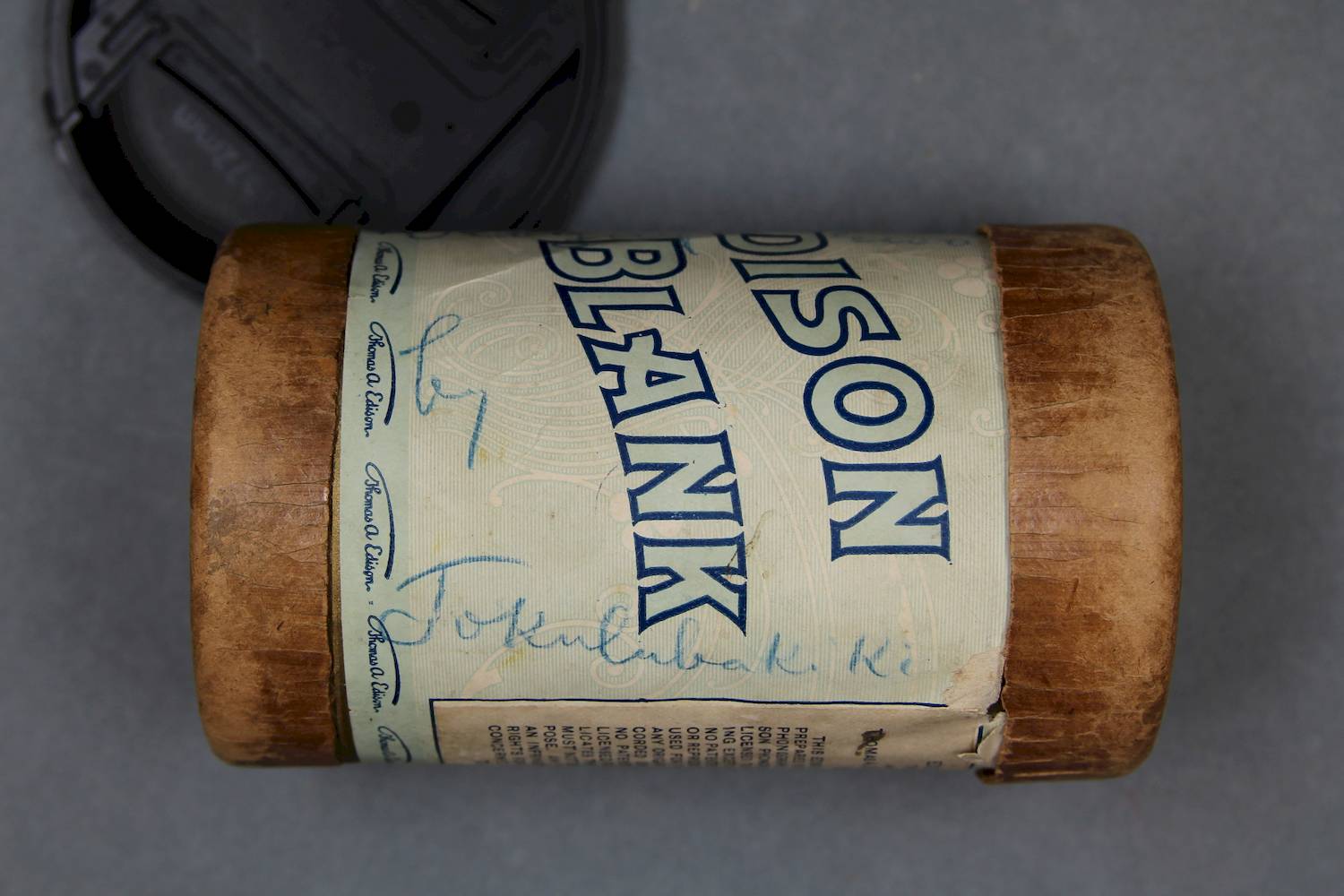 | Malinowski, Bronislaw. 1922. Argonauts of the Western Pacific: An Account of Native Enterprise and Adventure in the Archipelagoes of Melanesian New Guinea. London: Routledge. Read this at: https://wolnelektury.pl/media/book/pdf/argonauts-of-the-western-pacific.pdf | Baldwin, Bernard. 1945 "Usituma! Song of Heaven." Oceania, 15:201-238. Read this at: https://onlinelibrary.wiley.com/doi/abs/10.1002/j.1834-4461.1945.tb00425.x | Malinowski, Bronislaw. 1916. ”Baloma: The Spirits of the Dead in the Trobriand Islands.” The Journal of the Royal Anthropological Institute of Great Britain and Ireland 46:353-430. Read this at: https://www.jstor.org/stable/2843398 | Malinowski, Bronislaw. 1929. The Sexual Life of Savages in Northwestern Melanesia. New York: Liveright. Read this at: http://www.berose.fr/IMG/pdf/malinowski_1929-the_sexual_life_of_savages.pdf | Malinowski, Bronislaw. 1967. A Diary in the Strict Sense of the Term. Trans. Norbert Guterman. New York: Harcourt, Brace & World. Read this at: | Young, Michael. 1998. Malinowski’s Kiriwina: Fieldwork Photography 1915–1918. Chicago: University of Chicago Press. Read this at: |
| C46/1400 | Ilakavetega | Monakewo (singer, male) | Trobriand Islands, Territory of Papua | July 1915 – October 1918 | 1. Unaccompanied male vocal solo of spoken text with some sung parts. Ilakavetega is a story from Kiriwina known as 'The Reef Heron and Ilakavetega' (Malinowski 1929:341-342). Malinowski transcribed, translated and explained the story and song of The Reef Heron and Ilakavetaga, calling it a "gratuitous insult" and noting that it was told with "sing-song intonation" (Malinowski 1929:341-342). | Malinowski described Monakewo as “a great friend of mine” (Malinowski 1929:68) and “one of my best linguistic commentators” (Malinowski 1935:38). Monakewo was Paluwa’s son, and lived in Omarakana. Malinowski mentioned him many times in his texts, and noted working with him on a number of occasions. Monakewo helped Malinowski back from another village one evening when Malinowski was unwell (Malinowski 1967:295 | Surface noise caused by mould. | Kilivila | Field recordings; Folk tales; Storytelling | Malinowski, Bronislaw Kasper | 2'21" | Bronislaw Malinowski's 1915-1918 fieldwork on Kiriwina, Trobriand Islands, Papua New Guinea | Black wax cylinder | Bronislaw Malinowski 1915 – 1918 Trobriand Islands, Territory of Papua Cylinder Collection (C46) | British Library |  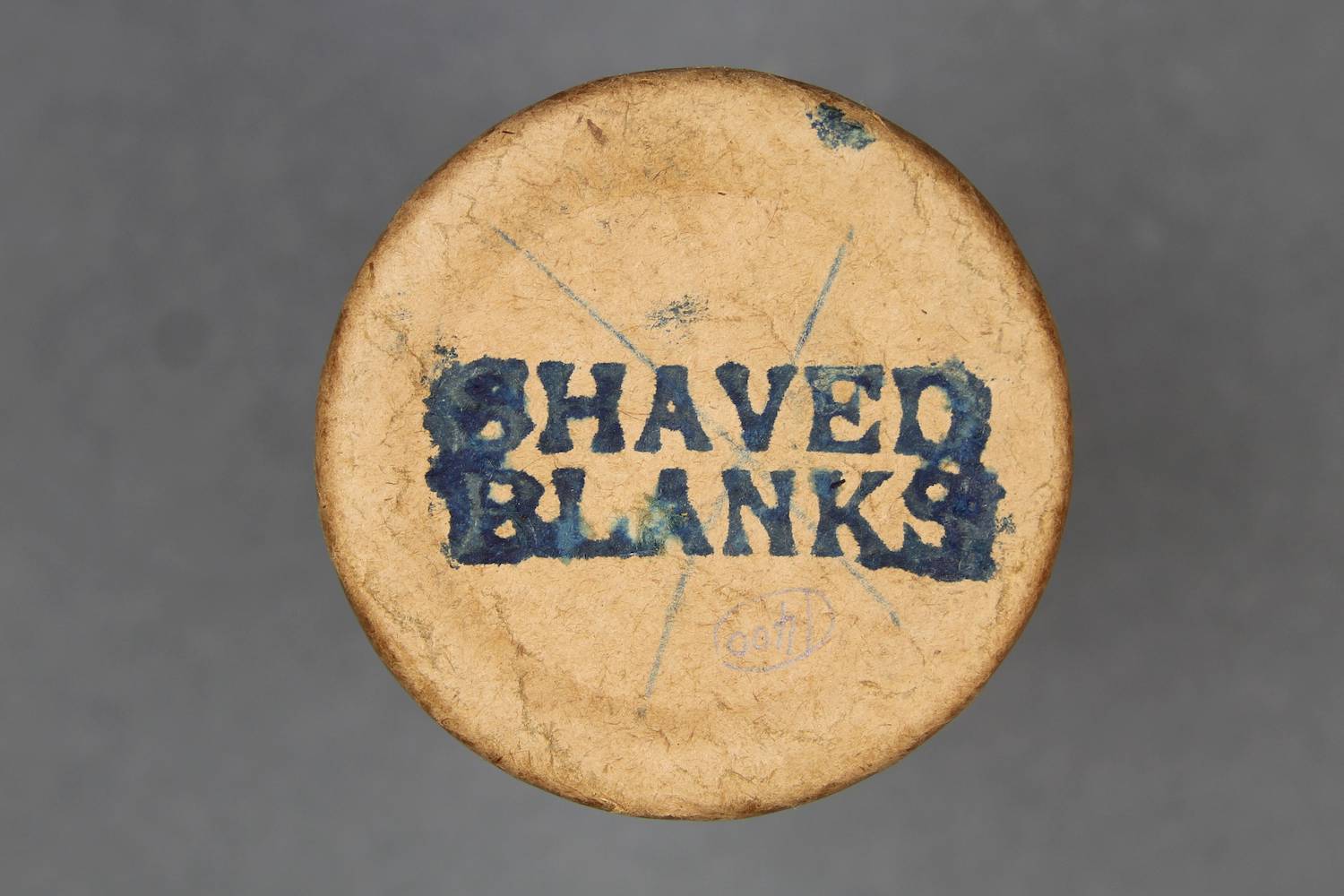 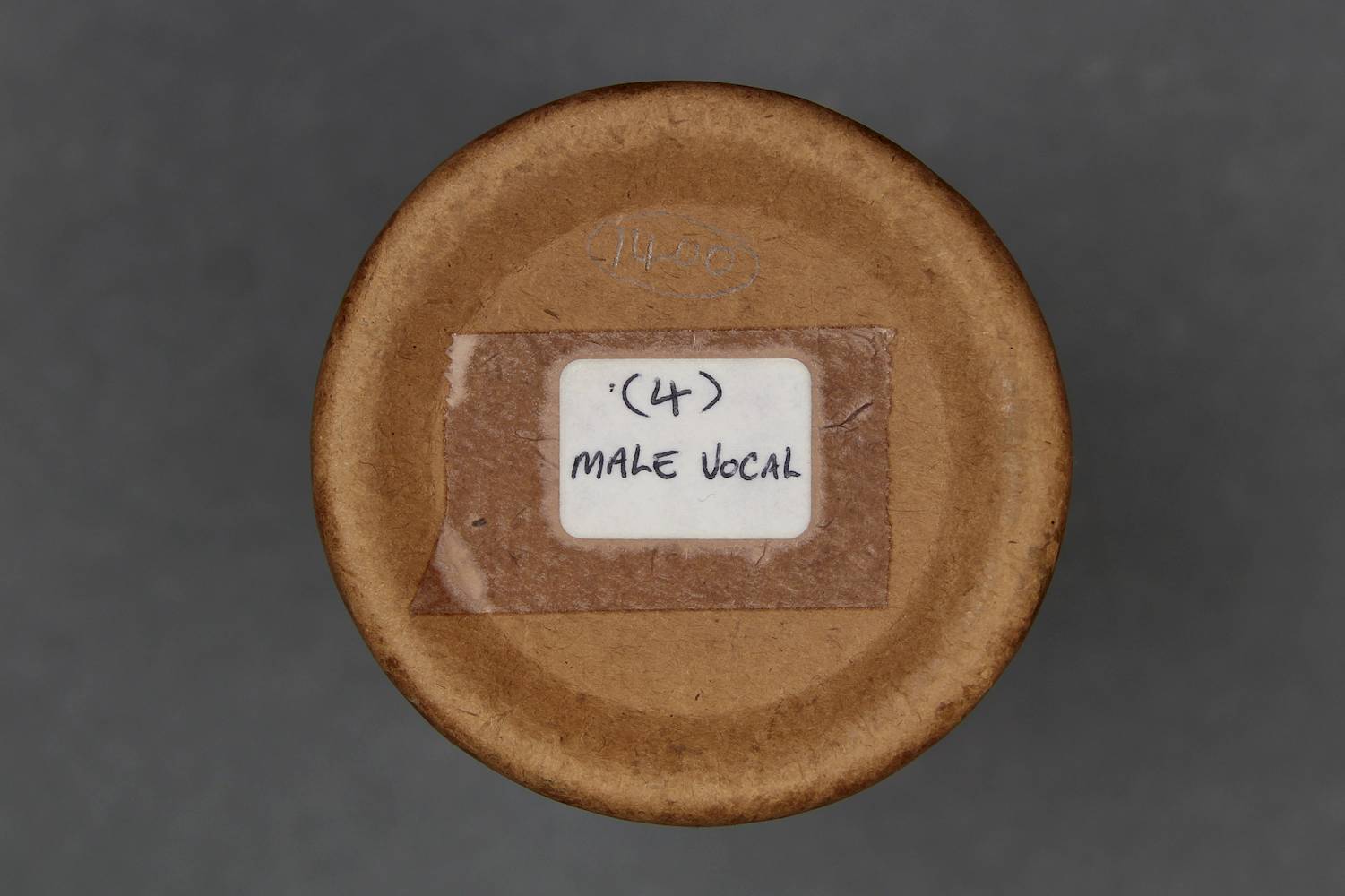 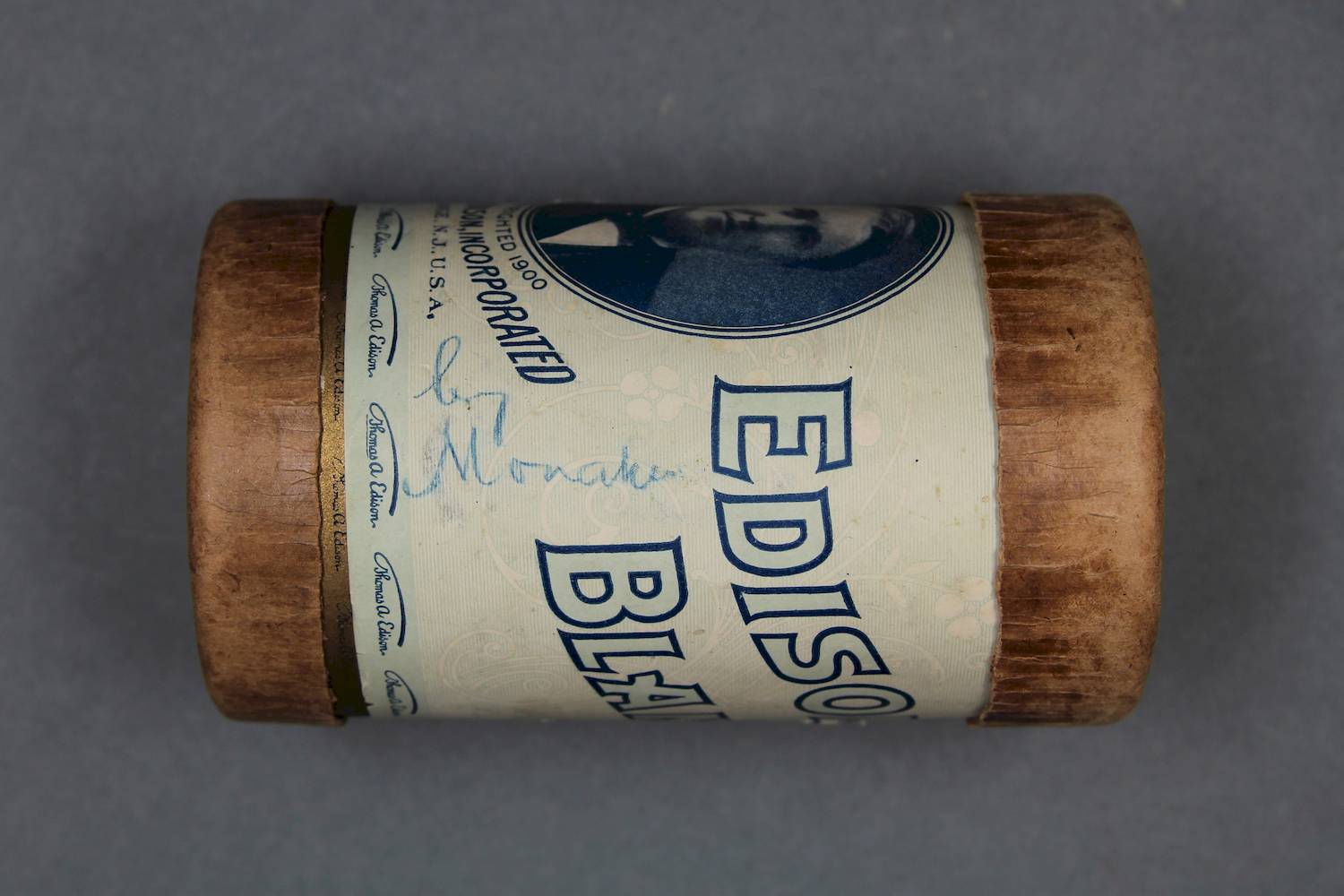 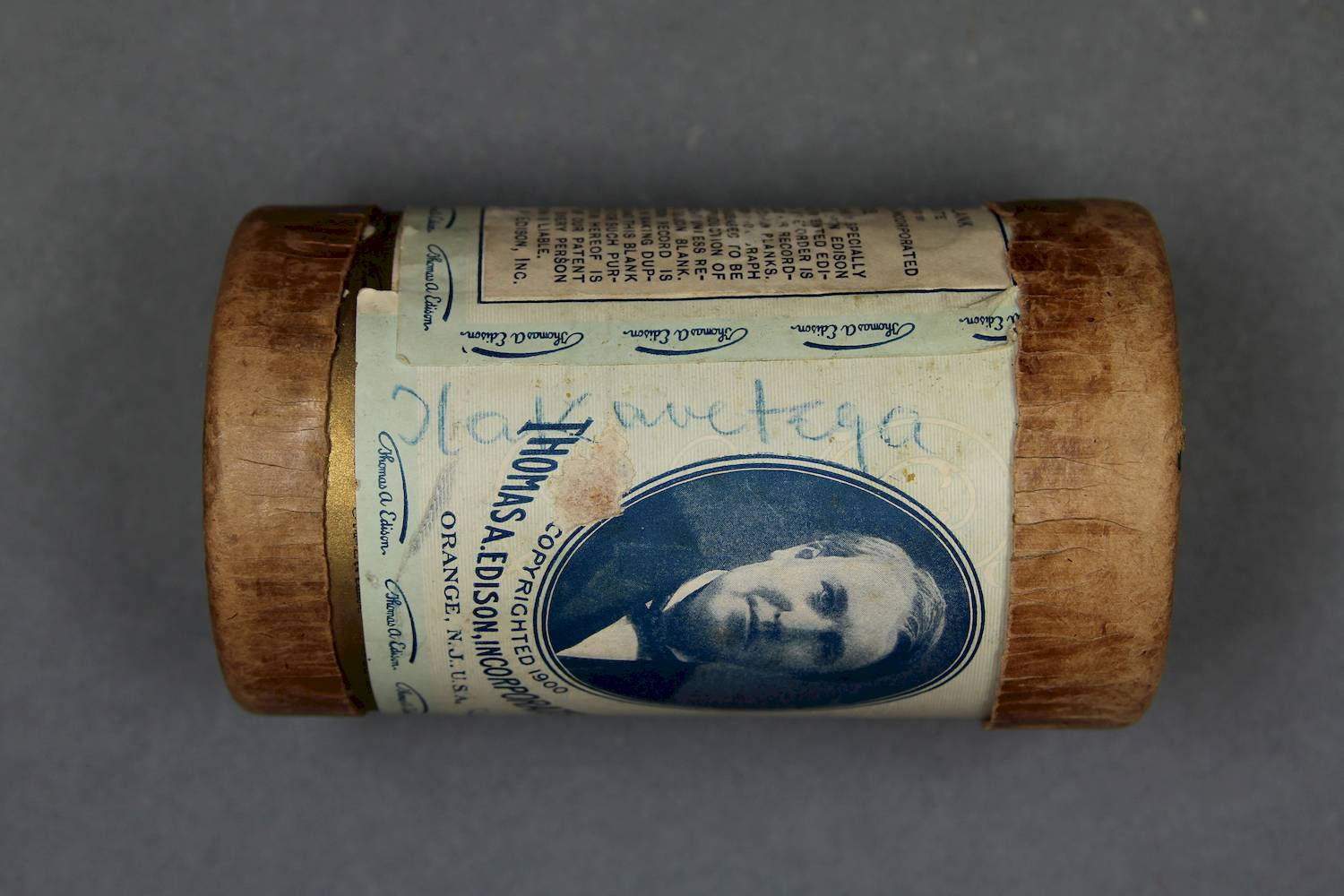  | Malinowski, Bronislaw. 1929. The Sexual Life of Savages in Northwestern Melanesia. New York: Liveright. Read this at: http://www.berose.fr/IMG/pdf/malinowski_1929-the_sexual_life_of_savages.pdf | |||||
| C46/1401 | Gumagabu | Paluwa (singer, male) | Trobriand Islands, Territory of Papua | 1918-07-17 | 1. Unaccompanied male vocal solo singing. Gumagabu is a song, dance and story/myth from Kiriwina; Malinowski explained and transcribed both the song and the story (Malinowski 1922:291-296). Both the song and the story of Gumagabu depicts the avenging expedition of a chief called Tomakam, although they do not quite tally. Tomakam’s aim was to avenge the earlier murder of his older brother, a chief called Toraya, in the district of Gabu in the D’Entrecasteaux Islands (Malinowski 1922:291-296). Malinowski mentioned seeing the dance of gumagabu (1916:380). The date of publication indicates that he must have seen it during his first period of fieldwork in the Trobriand Islands, between July 1915 and March 1916. Michael Young described it as a “Type of dance using dancing shields” (1998:283), and “the most popular” of the kaidebu dances (1998:94). The photograph in Malinowski 1929: plate 14, "Men in Full Festive Attire" and a similar one in LSE (LSE photo archives MALINOWSKI/3/7/13) almost certainly show the gumagabu dance being performed. | Paluwa was a Trobriand Islander of low rank from the village of Omarakana (Malinowski 1967:295). He had three sons, including Monakewo (see below), and three daughters, and “discussed his troubles … at length” with Malinowski (Malinowski 1929:80). | Cylinder is cracked, resulting in loud clicks throughout. | Kilivila | Field recordings; Folk songs and music; Narrative songs; Ballads | Malinowski, Bronislaw Kasper | 1'59" | Bronislaw Malinowski's 1915-1918 fieldwork on Kiriwina, Trobriand Islands, Papua New Guinea | Black wax cylinder | Bronislaw Malinowski 1915 – 1918 Trobriand Islands, Territory of Papua Cylinder Collection (C46) | British Library |  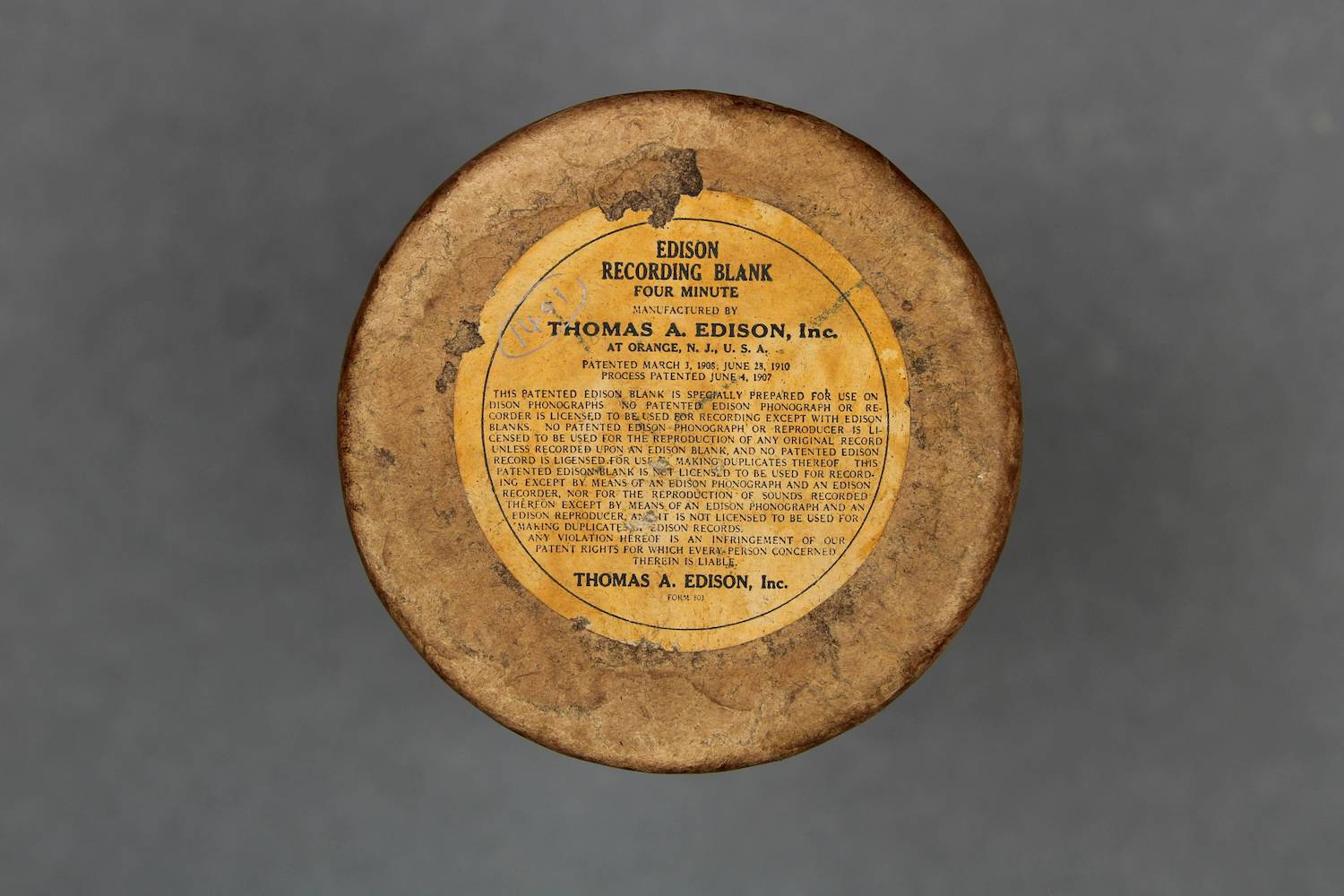 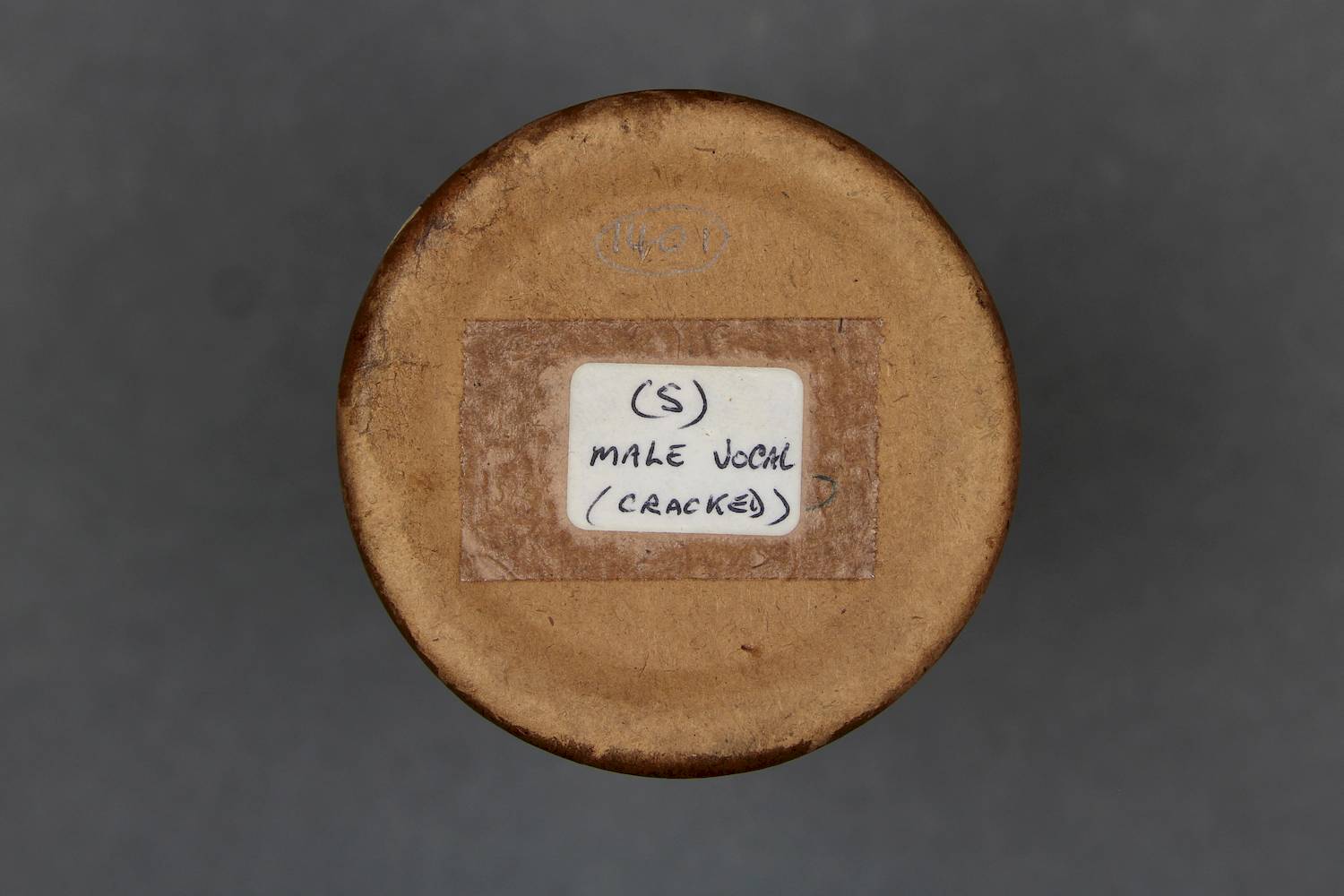 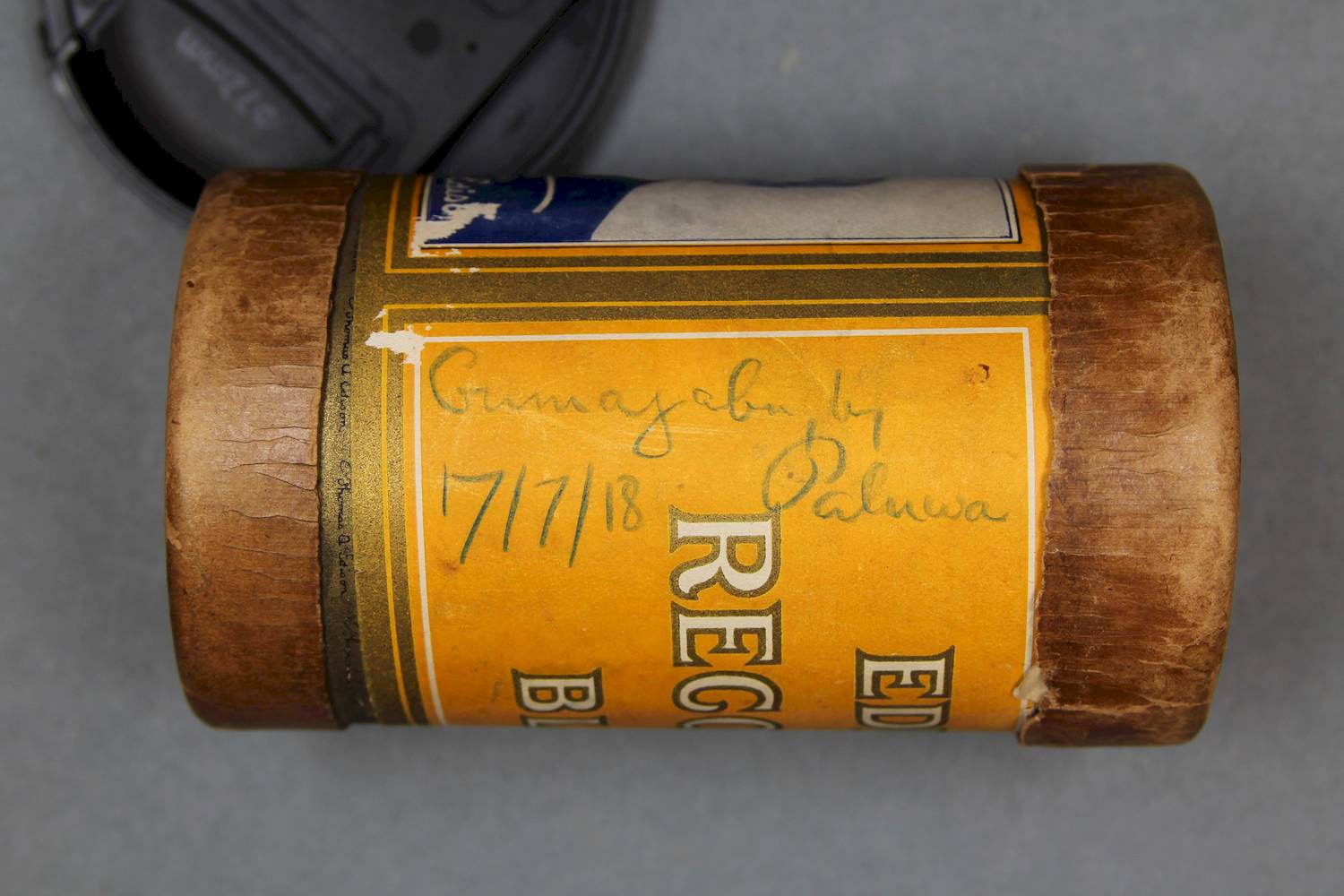   | Malinowski, Bronislaw. 1922. Argonauts of the Western Pacific: An Account of Native Enterprise and Adventure in the Archipelagoes of Melanesian New Guinea. London: Routledge. Read this at: https://wolnelektury.pl/media/book/pdf/argonauts-of-the-western-pacific.pdf |
- Baldwin, Bernard. 1945 “Usituma! Song of Heaven.” Oceania, 15:201–238. https://onlinelibrary.wiley.com/doi/abs/10.1002/j.1834-4461.1945.tb00425.x
- Dakowski, Bruce. 1985. Strangers Abroad: Off the Verandah. Andre Singer, producer and director. Central Independent Television PLC. 60 min. TV programme. https://www.youtube.com/watch?v=zjCMOpnx6r8/
- Lawton, R. S. 1977. “Missionary Lingue Franche: Dobu.” In S. A. Wurm, editor, New Guinea Area Languages and Language Study, Vol. 3: Language, Culture, Society, and the Modern World, 907–946. Pacific Linguistics C-40. Canberra: Australian National University.
- Lewis, Elaine. 1991. “A Review of the Music of the Trobriand Islands from Recordings Collected Between 1904 and 1979.” MMus thesis, University of New South Wales.
- Malinowski, Bronislaw. 1916. “Baloma: The Spirits of the Dead in the Trobriand Islands.” The Journal of the Royal Anthropological Institute of Great Britain and Ireland 46:353–430.
- Malinowski, Bronislaw. 1922. Argonauts of the Western Pacific: An Account of Native Enterprise and Adventure in the Archipelagoes of Melanesian New Guinea. London: Routledge. https://wolnelektury.pl/media/book/pdf/argonauts-of-the-western-pacific.pdf
- Malinowski, Bronislaw. 1929. The Sexual Life of Savages in Northwestern Melanesia. New York: Liveright. http://www.berose.fr/IMG/pdf/malinowski_1929-the_sexual_life_of_savages.pdf
- Malinowski, Bronislaw. 1932. Crime and Custom in Savage Society, London: Harcourt, Brace & Company.
- Malinowski, Bronislaw. 1935. Coral Gardens and their Magic: A Study of the Method of Tilling of the Soil and of Agricultural Rites in the Trobriand Islands. 2 vols. London: Allen & Unwin.
- Malinowski, Bronislaw. 1967. A Diary in the Strict Sense of the Term. Trans. Norbert Guterman. New York: Harcourt, Brace & World.
- Myers, Charles S. 1941. Charles Gabriel Seligman 1873–1940. Bibliographical Memoirs of Fellows of the Royal Society 3(10): 626–646. https://doi.org/10.1098/rsbm.1941.0026.
- Seidenberg, Steven. 1985. “Slate 747: Wax Cylinder Translation.” 2 pp. From National Sound Archive.
Seidenberg, Steven. 1985. In our fathers’ footsteps: the making of the television documentary ‘`Strangers Abroad’. Journal of the Anthropological Society of Oxford 16(3):225-232.
- Senft, G. 2011. The Tuma Underworld of Love – Erotic and Other Narrative Songs of the Trobriand Islanders and Their Spirits of the Dead. Amsterdam: John Benjamins. http://www.jbe-platform.com/content/books/9789027284693
- Senft, G. 2015. Tales from the Trobriand Islands of Papua New Guinea: Psycholinguistic and Anthropological Linguistic Analyses of Tales Told by Children and Adults. Amsterdam: John Benjamins. http://www.jbe-platform.com/content/books/9789027268266
- Wayne, Helena. ed. 1995. The Story of a Marriage: The Letters of Bronislaw Malinowski and Elsie Masson. Vol. 1, 1916–1920. London: Routledge.
- Young, Michael. 1984. “The Intensive Study of a Restricted Area, or, Why Did Malinowski Go to the Trobriand Islands?” Oceania 55(1): 1–26.
- Young, Michael. 1988. “Editor’s Introduction.” In Malinowski among the Magi: ‘The Natives of Mailu’, ed. Michael W. Young, 1–76. London: Routledge.
- Young, Michael. 1998. Malinowski’s Kiriwina: Fieldwork Photography 1915–1918. Chicago: University of Chicago Press.
- Young, Michael. 2000. “The Careless Collector: Malinowski and the Antiquarians” in Michael O’Hanlon and Robert Welsch, ed., Hunting the Gatherers: Ethnographic Collectors, Agents, and Agency in Melanesia, 1870s–1930s. Oxford: Berghahn Books.
- Young, Michael. 2004. Malinowski: Odyssey of an Anthropologist, 1884–1920. New Haven: Yale University Press.






![Chiefs [Touluwa of Omarakana and large yam house] Chiefs [Touluwa of Omarakana and large yam house]](https://www.true-echoes.com/wp-content/uploads/cache/MALINOWSKI_3_23_3/618705483.jpg)










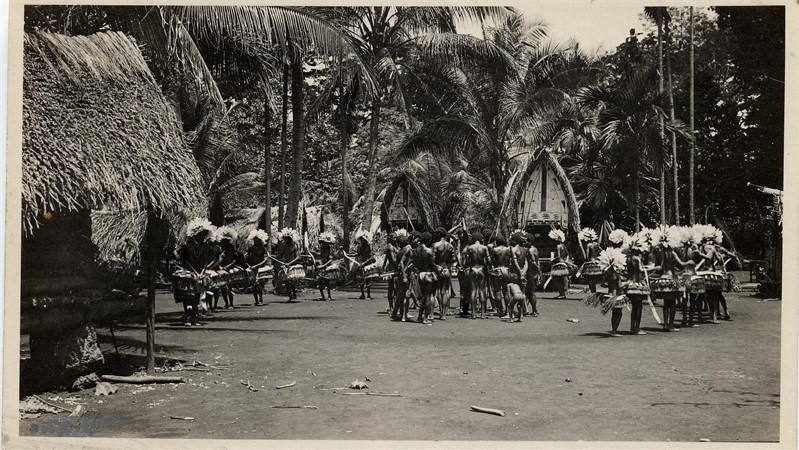



I just love reading historical people who wrote and contributed on my island (Trobriand) way back in 1900 years ago..
Special acknowledgement to the anthropologist B.Malinowski and his trobriand consultants. Thanks alot guys, job well done.
I just love reading historical people who wrote and contributed on my island (Trobriand) way back in 1900 years ago..
Special acknowledgement to the anthropologist B.Malinowski and his trobriand consultants. Thanks alot guys, job well done.
So intriguing refreshing and sad to hear songs, stories of old.The voices of the dead in songs now made alive and are still living through your great work.
Thank you so much at the same time its educational as well to many of us, much of the music. Traditional songs &, tunes are beging to disappear. Great changes traditional norms beliefs and way of life, social changes are evident on lives of Kiriwina people. I believe vecause of outside influences. Outside I mean is outside the Trobriand culture,that includes the rest who are not Kiriwina speaking people.
I am from the Trobriands and I can I recognize the images of people & places too. I was young at that time the images has brought back those yestyears memories
Thank once again and I salute you for the great work.